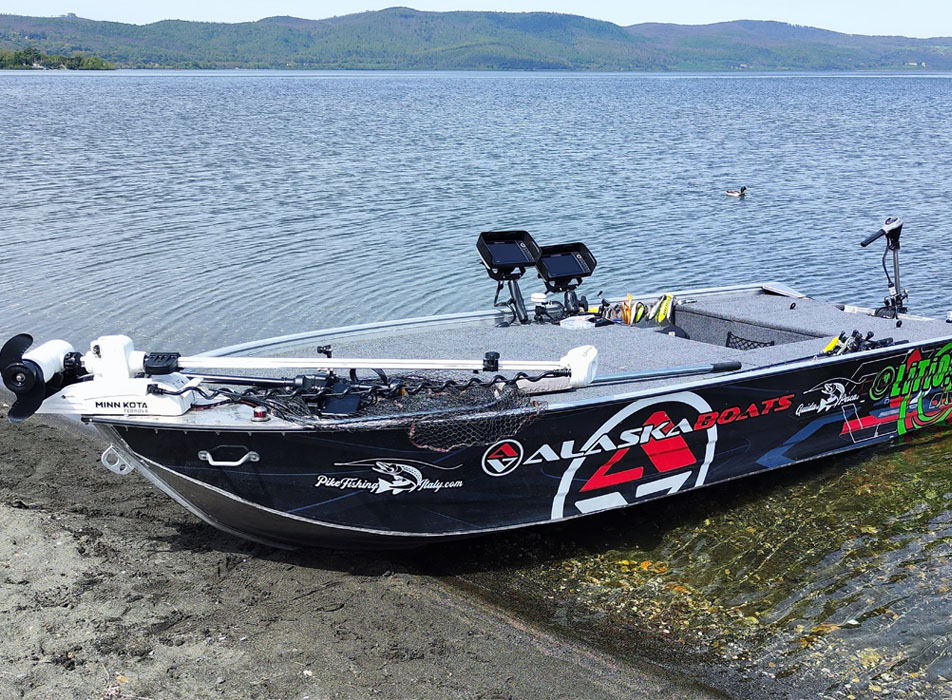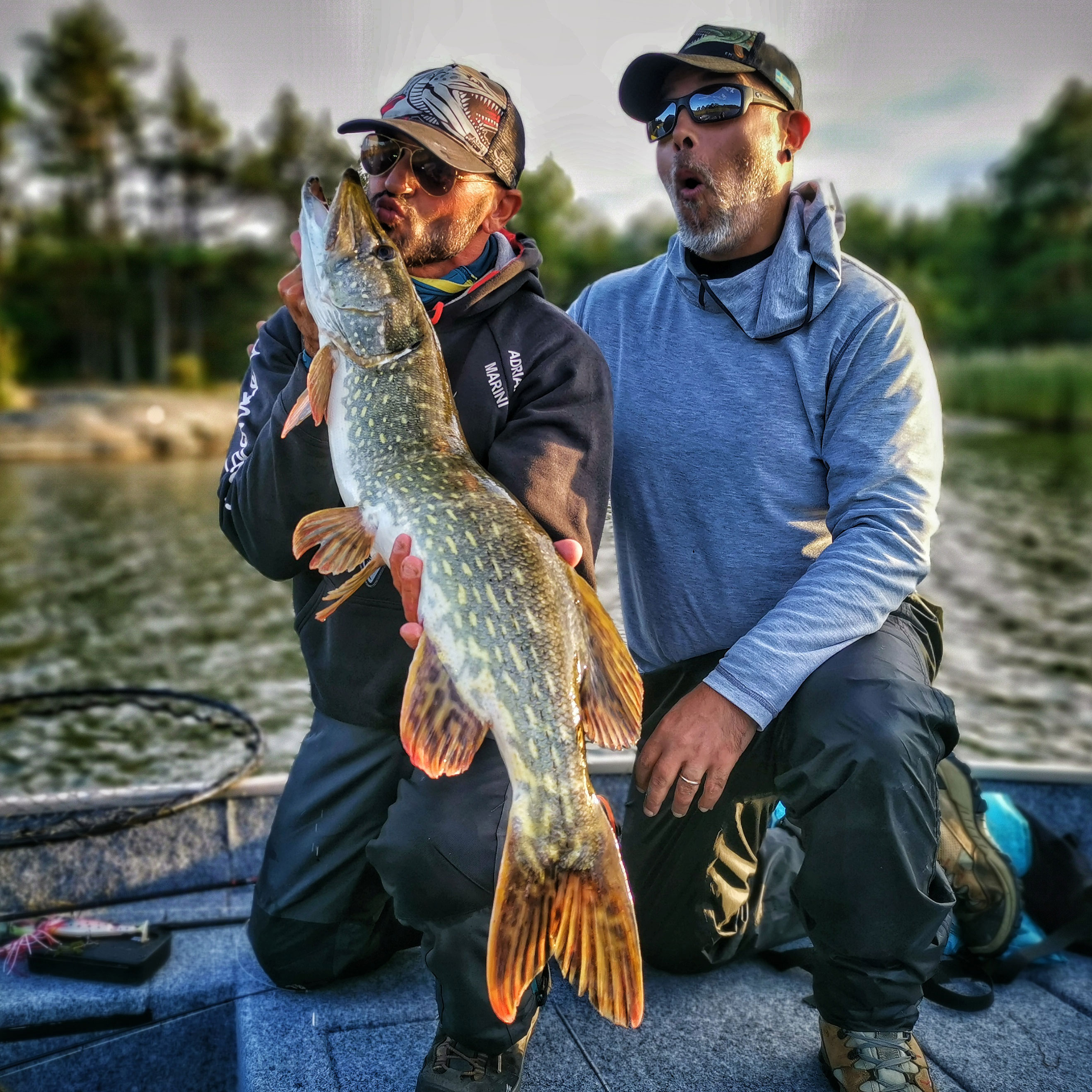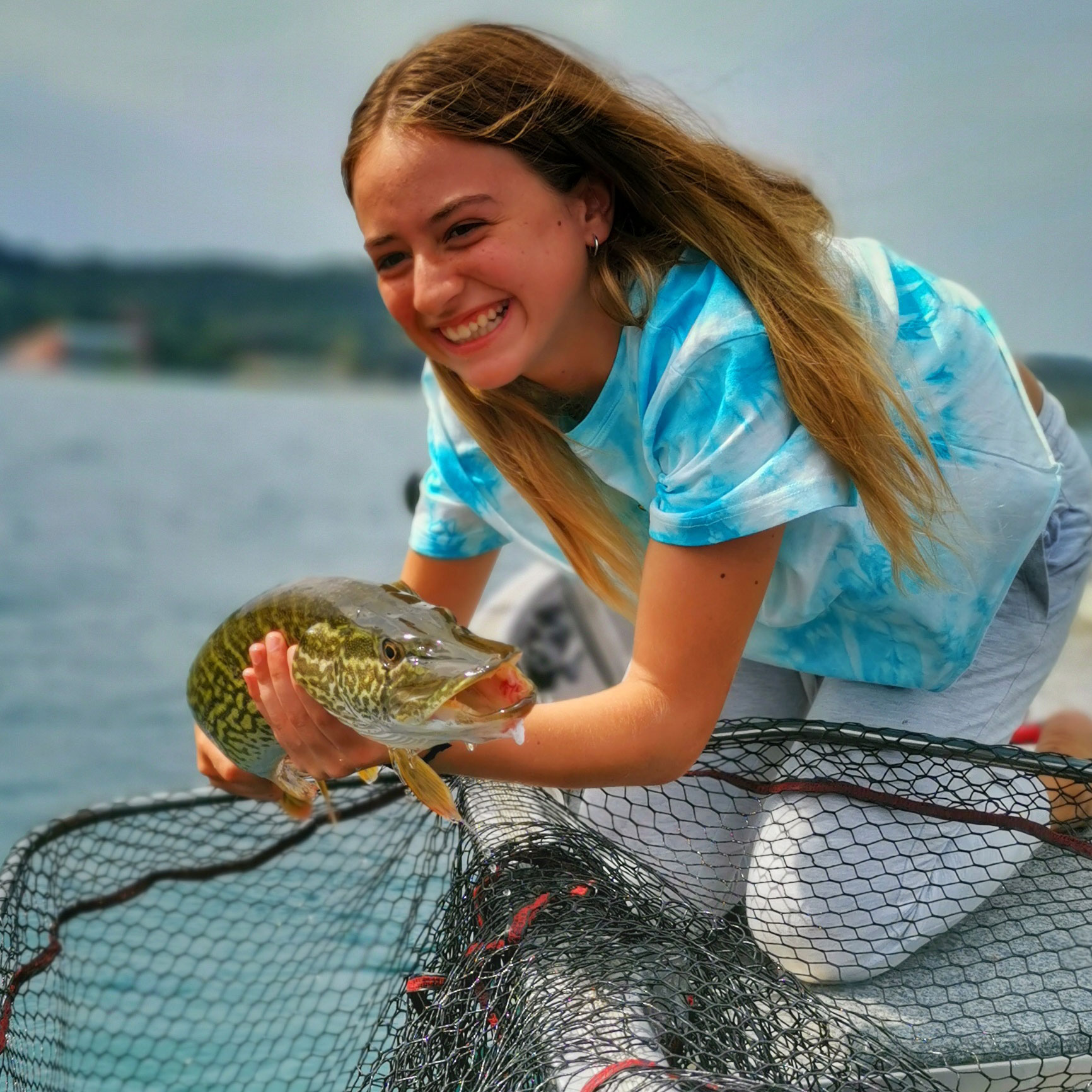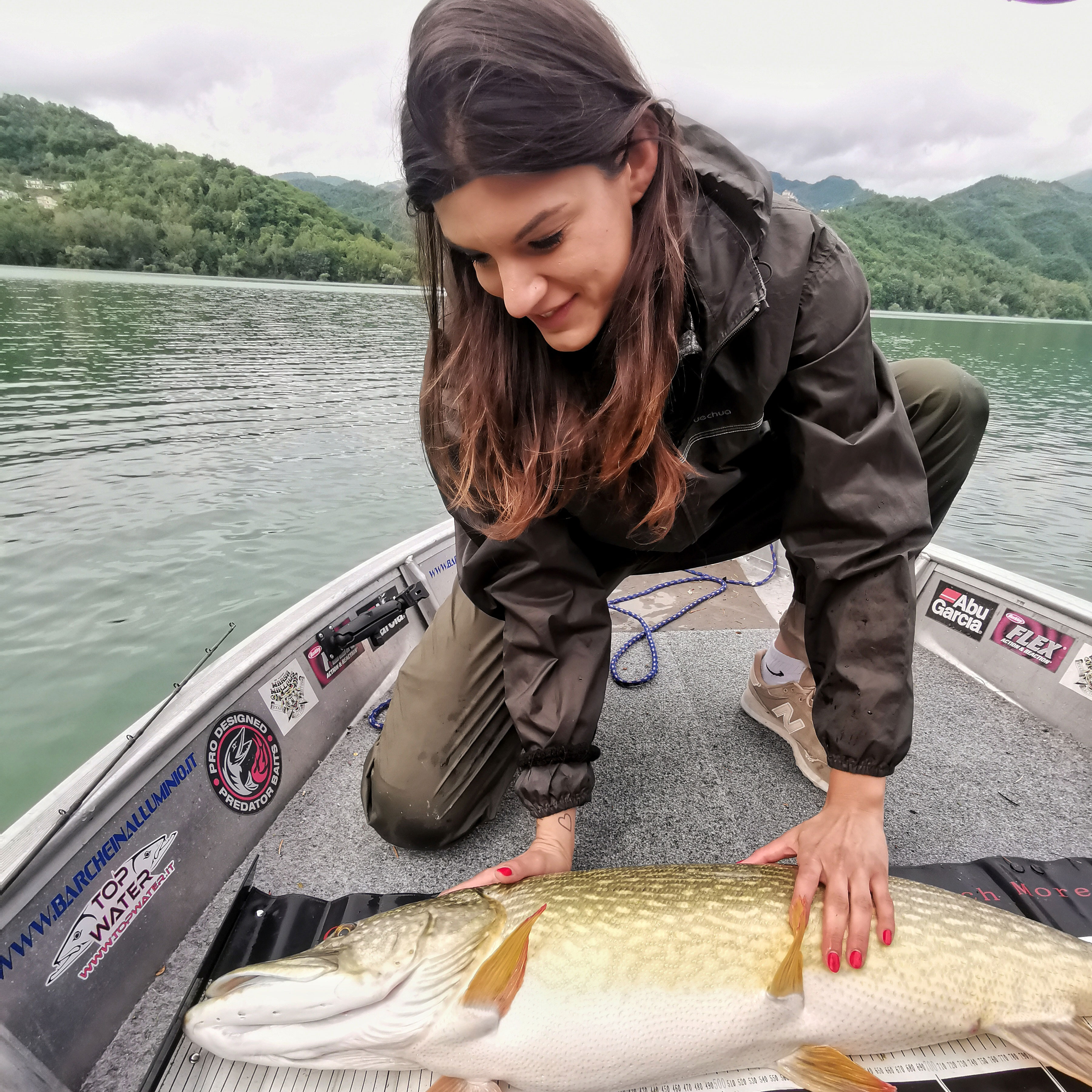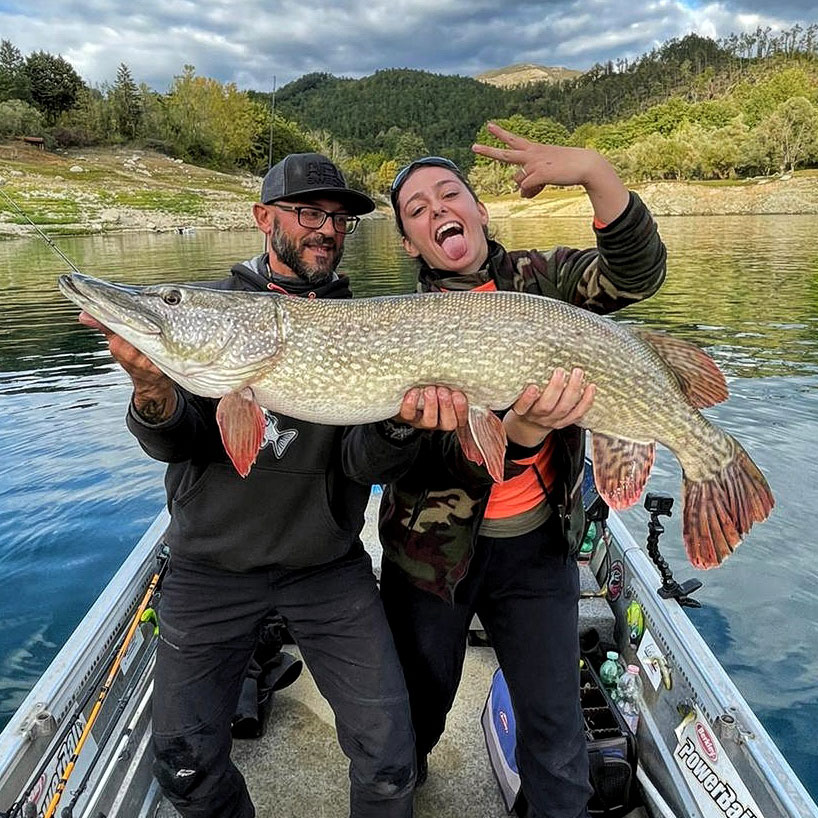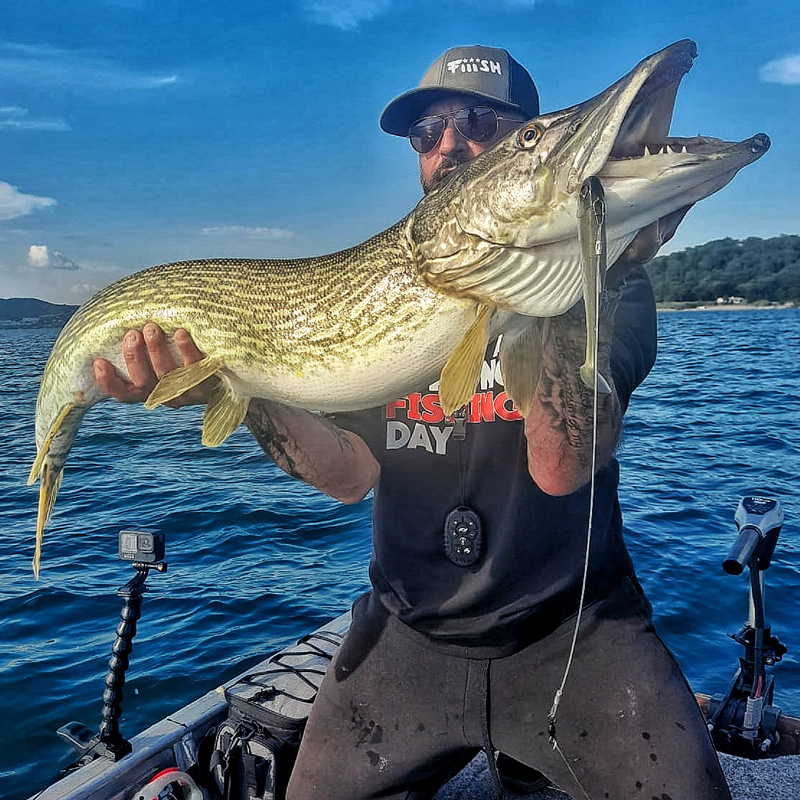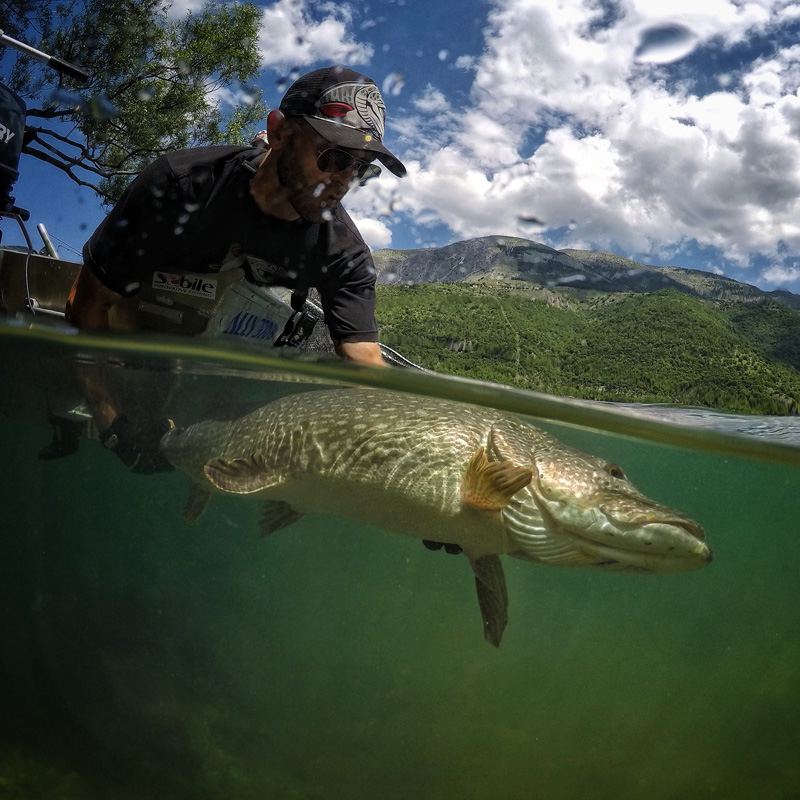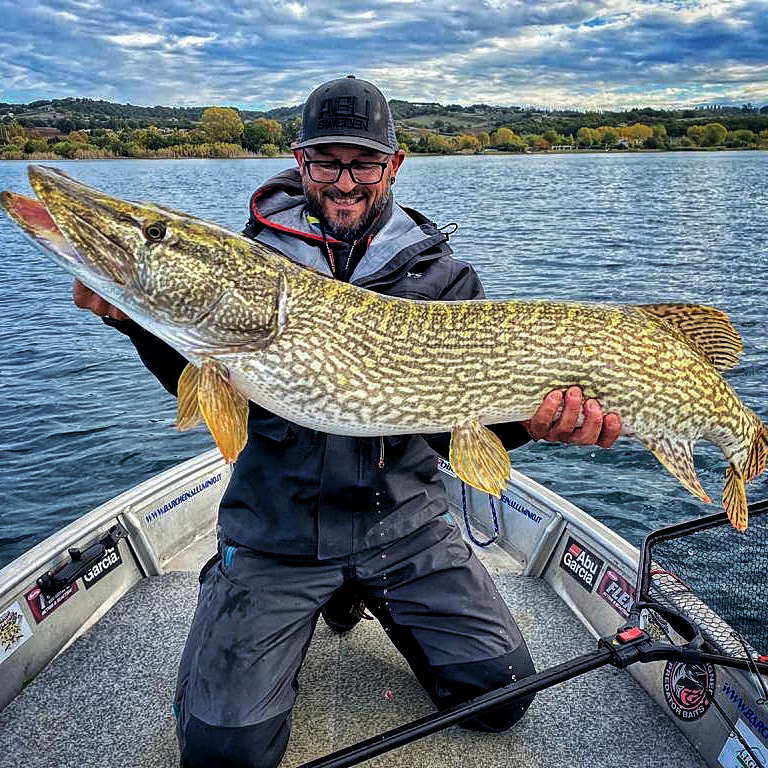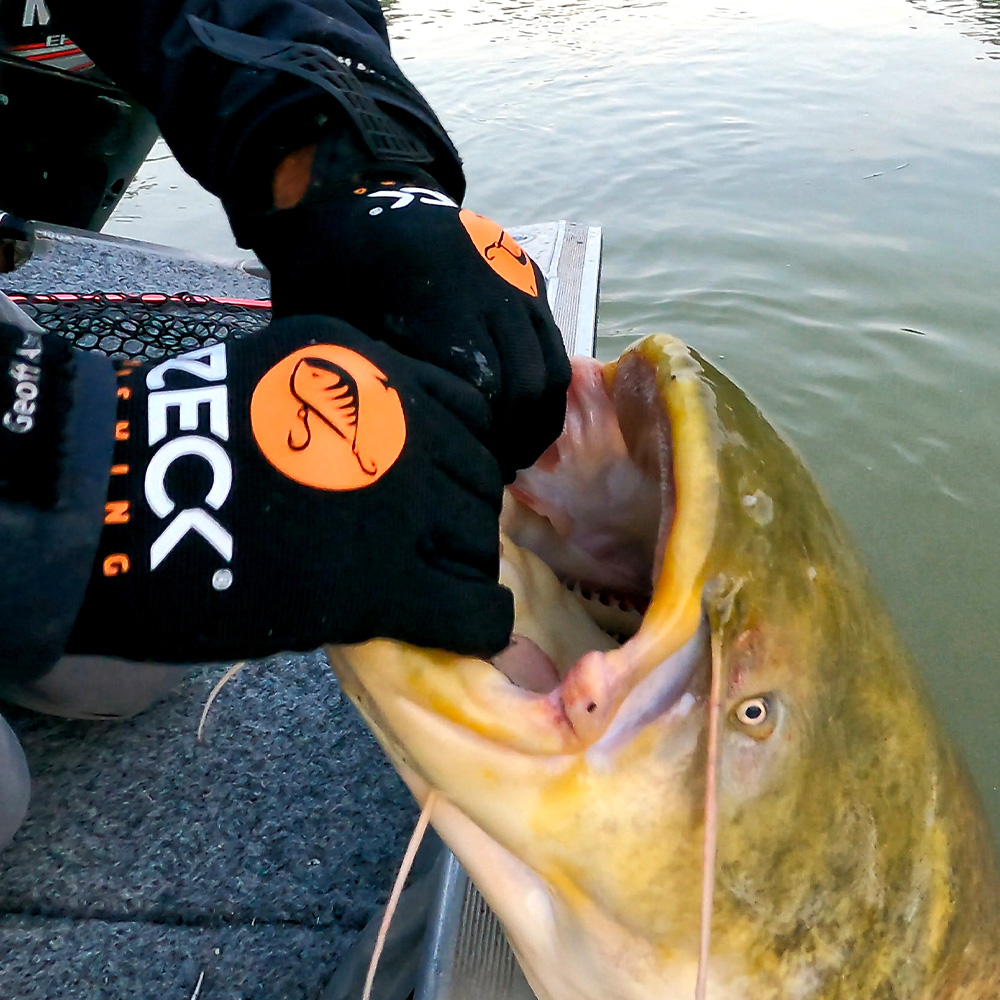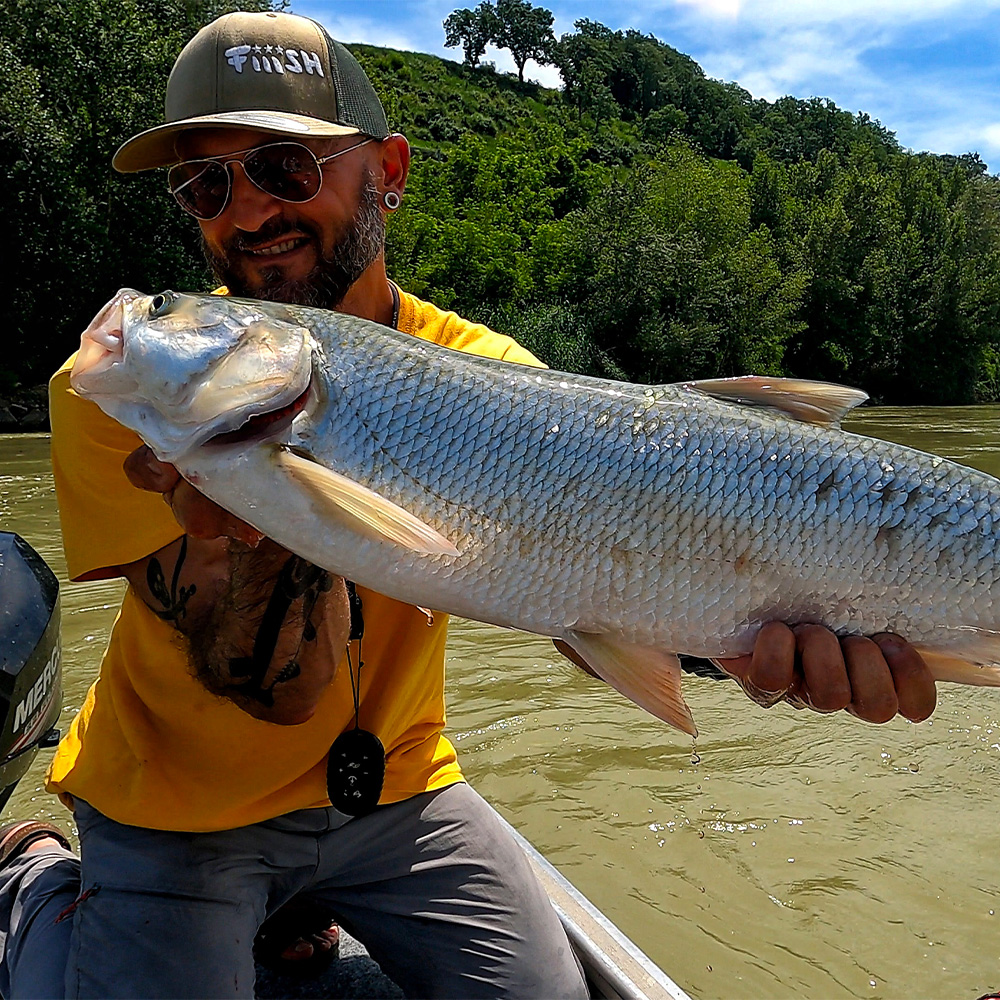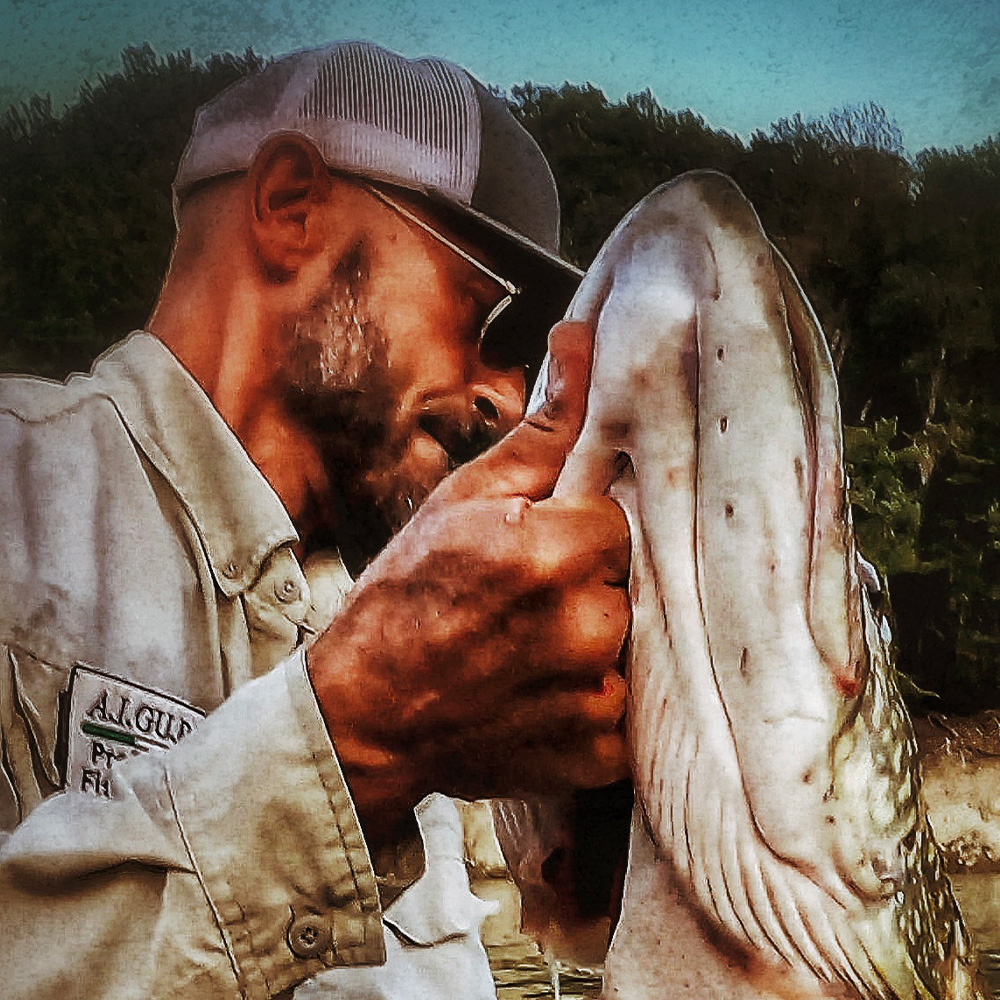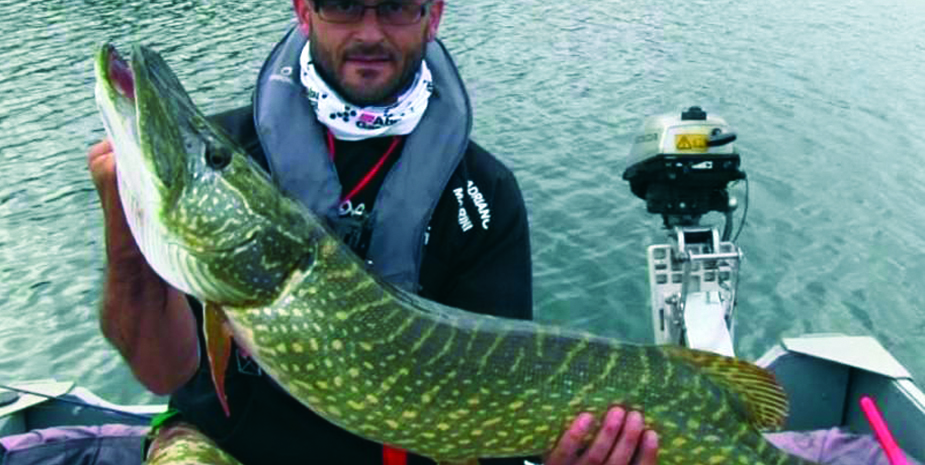
Bulldawgs are large rubber creatures with a chunky body and a long tail resembling a huge grub; they are a relatively recent invention originating from the American market, dedicated to Musky and pike fishing.
The most famous Bulldawgs are from Musky Innovations, but now the market is full of such lures that vary only in some details.
They can be considered "reaction baits" as they do not mimic any particular fish and are produced in an infinite variety of colors, sizes, and weights. They are suitable for both trolling and casting, but to be cast, they require specific equipment capable of handling lures that can exceed 200 grams. They are capable of making a good size selection and are very catchy, although recently they are giving way to a similar category, the Twin Tail or "double tail."
The Super Twin Tail by FOX is probably the most famous double tail, currently out of production but still widely used and copied due to their great effectiveness. There are also versions with two tails positioned on the vertical axis rather than the horizontal one, like the Flamingo Tail, but the substantial differences are minimal.
Like Bulldawgs, double tails are generally large and heavy and differ from the former mainly in having two tails instead of one, which increases the amount of vibrations emitted, making these lures terribly catchy. They are usually well-equipped lures with two treble hooks under the belly (but in smaller sizes, one is enough) and often a single hook on the back.
The internal structure is robust and heavy, capable of giving the lure great sinking ability, and some types can even work vertically. Double tails are widely used for trolling, especially in open water fishing, but generally support all types of retrieval. Having poor anti-snagging capabilities, we will use these lures mainly in open spaces or at the edges of structures and weeds.
For more intricate and snag-prone situations, there are smaller models, without armor, to be mounted according to the environment and the type of fishing we want to do. This type of double tail, also called doble lip, can also be rigged in anti-snag mode using large weighted offset hooks. The double tail I use most frequently is the Esoxmania, a hand-made lure built by Cristiano Luraschi and designed together with the Pike-Angler Americo Rocchi. It is made with very soft rubber capable of generating vibrations even at very slow speeds but can also be trolled at sustained speeds (around 3 knots).
It is much heavier than its size (fast-sinking setup) and, thanks to a perfectly balanced configuration, can be used effectively for both casting and trolling. It is equipped with two treble hooks under the belly and is devoid of the single dorsal hook, often unnecessary and harmful to pike. It is extremely catchy and can be the decisive lure in particularly challenging fishing conditions. Large rubber lures, especially those equipped with double treble hooks, but even more so those with a single dorsal hook, require some precautions during casting. They should be cast with power and progressivity, without abrupt "whips" of the rod but with a progressive acceleration that ends with the maximum power at the moment of releasing the line. To prevent the treble hook from tangling on the leader during landing or from getting caught on the lure's rubber, we must ensure that the lure, upon landing in the water, is in a horizontal position and perfectly ordered. To do this, we will gently stop the cast by acting with the thumb on the spool of our spinning reel a few tenths of a second before the lure touches the water. It is essential that this "stop" does not occur abruptly but occurs gently and progressively; otherwise, the recoil on the lure will entangle it even more. The result of the cast should be a lure that, a few centimeters before touching the water, is perfectly stretched and aligned with the line and that enters the water without causing a commotion. Grubs (also called "falcetti" in Italy) are among the first silicone lures ever made.
For pike fishing, I use Giant Grubs ranging in length from 15 to 20 cm, which I rig on a jighead weighing between half an ounce and an ounce, or on a weighted offset hook to have a strongly anti-snag setup. Grubs are easily castable even with spinning gear and allow for long distances. I use them a lot in weed beds, under lily pads, and generally in small spaces where it is difficult to work with larger lures.
Like all silicone lures, they are available in a wide range of colors and also in scented versions. Some small grubs, as well as small shads, lend themselves to being used as trailers on other lures, mainly on spinnerbaits. Adding a 10 cm grub to the hook of a spinnerbait will increase the lure's volume, its visibility in the water, and the amount of vibrations emitted; moreover, by adding colored grubs, attractive color combinations can be created.
Personally, I use, with excellent results, trailers in contrast to the color of the spinnerbait; furthermore, with this modification, we ensure that the pike's attack is more likely to occur near the spinnerbait hook. Rubber lures are also used on some hard baits. These hybrid lures usually have a rigid body to which a rubber appendage in the form of a grub or shad with a paddle tail is applied. Rubber tails are usually applied to jerkbaits and minnows and can help increase their attractiveness, especially during slow retrieves. In the world of hybrid jerks, my favorite is undoubtedly the Mc Mio by Abu Garcia (in junior, big, and beast versions, of increasing sizes), a rigid jerk to which a large grub has been applied, capable of working with any type of retrieval. I usually remove the tail treble hook to avoid the risk of tangles during casting. Another hybrid with exceptional performance, which has given me a lot of satisfaction, is the Mc Hybrid by Abu Garcia (in junior and big versions). It is a synthesis between a large lipless minnow and a shad with a paddle tail, which offers several unique characteristics.
The large rigid body is equipped with a powerful internal rattle, double treble hooks under the belly, and two rings for attachment to the snap, one at the front for surface work and one at the back for deep work. The rubber tail is applied through a steel spiral and is interchangeable in case it is damaged by the pike's bite. It is a lure with a characteristic and particular movement, which simultaneously combines two very different movements: the body "wobbling" and the tail paddle "wagging" simultaneously, but with a different rhythm than the body. In conclusion, I believe that silicone lures are among the main baits for targeting pike in any environment and at any time.
Thanks to their immense variety, we will always find the right rubber for the right occasion!
Adriano Marini
To learn more:
Contacts INFO for Soft Bait - Part 3 - Bulldawg and Twin Tail, the double tail
LAKES
| Lake Type | Vulcanic | |
| Altitude | 340 feet | |
| Surface | 22 miles2 | |
| Depth | 540 feet | |
| Distance from Rome | 24 miles | |
| Target | Pike, Bass |
| Lake Type | Artificial | |
| Altitude | 1760 feet | |
| Surface | 4 miles2 | |
| Depth | 285 feet | |
| Distance from Rome | 68 miles | |
| Target | Pike, Asp, Perch |
| Lake Type | Artificial | |
| Altitude | 1760 feet | |
| Surface | 2 miles2 | |
| Depth | 220 feet | |
| Distance from Rome | 65 miles | |
| Target | Pike, Asp, Perch |
| Lake Type | Vulcanic | |
| Altitude | 660 feet | |
| Surface | 1 miles2 | |
| Depth | 190 feet | |
| Distance from Rome | 24 miles | |
| Target | Pike, Bass |
| Lake Type | Artificial | |
| Altitude | 1210 feet | |
| Surface | 1 miles2 | |
| Depth | 62 feet | |
| Distance from Rome | 62 miles | |
| Target | Pike |
| Lake Type | Volcanic | |
| Altitude | 1000 feet | |
| Surface | 44 miles2 | |
| Depth | 134 feet | |
| Distance from Rome | 86 miles | |
| Target | Bass, Pike |

| Lake Type | Artificial | |
| Altitude | 2850 feet | |
| Surface | 1 miles2 | |
| Depth | 134 feet | |
| Distance from Rome | 86 miles | |
| Target | Pike, Perch |

| River | ||
| Altitude | 490 feet | |
| Spot Length | 27 miles | |
| Distance from Rome | 18 miles | |
| Target | Catfish, Asper, Chub |
BOAT
My boat is a 4355 alluminium alaska boat perfectly equipped for fishing, safe and unsinkable.
- Length 14 feet
- Engine 1 Mercury 20 Hp
- Engine 2 Rhino BLX 110 lbs 24 volt
- Bow Engine Minnkota Terrova 80 lbs 24 volt
- Fish Finder GPS 2 x Humminbird Helix MSI+
- Mega Live imaging
- Lithium Battery e 24 volt LitioStore
ADRIANO MARINI
BIO
My name is Adriano Marini and I am a professional AIGUPP fishing guide code ITA0108/21. I started fishing with my father at the age of 8. Through the years I have gained experience, by trying different techniques, to specialize in predators fishing; and I started practicing catch and release from a very young age. Since 2015 I have been a fishing guide with a specialization in pike fishing.
TV Series on Sky pesca TV "Pike Story". I am also a collaborator and editor about pike fishing for these magazines: Pesca spinning, Spinning passione and “Piscor magazine”. In 2015 together with Americo Rocchi we made the documentary: I segreti del luccio 2. My goal is to provide an unforgettable fishing experience: funny, educational and relaxing; always placing priority on nature respect and fish protection.


